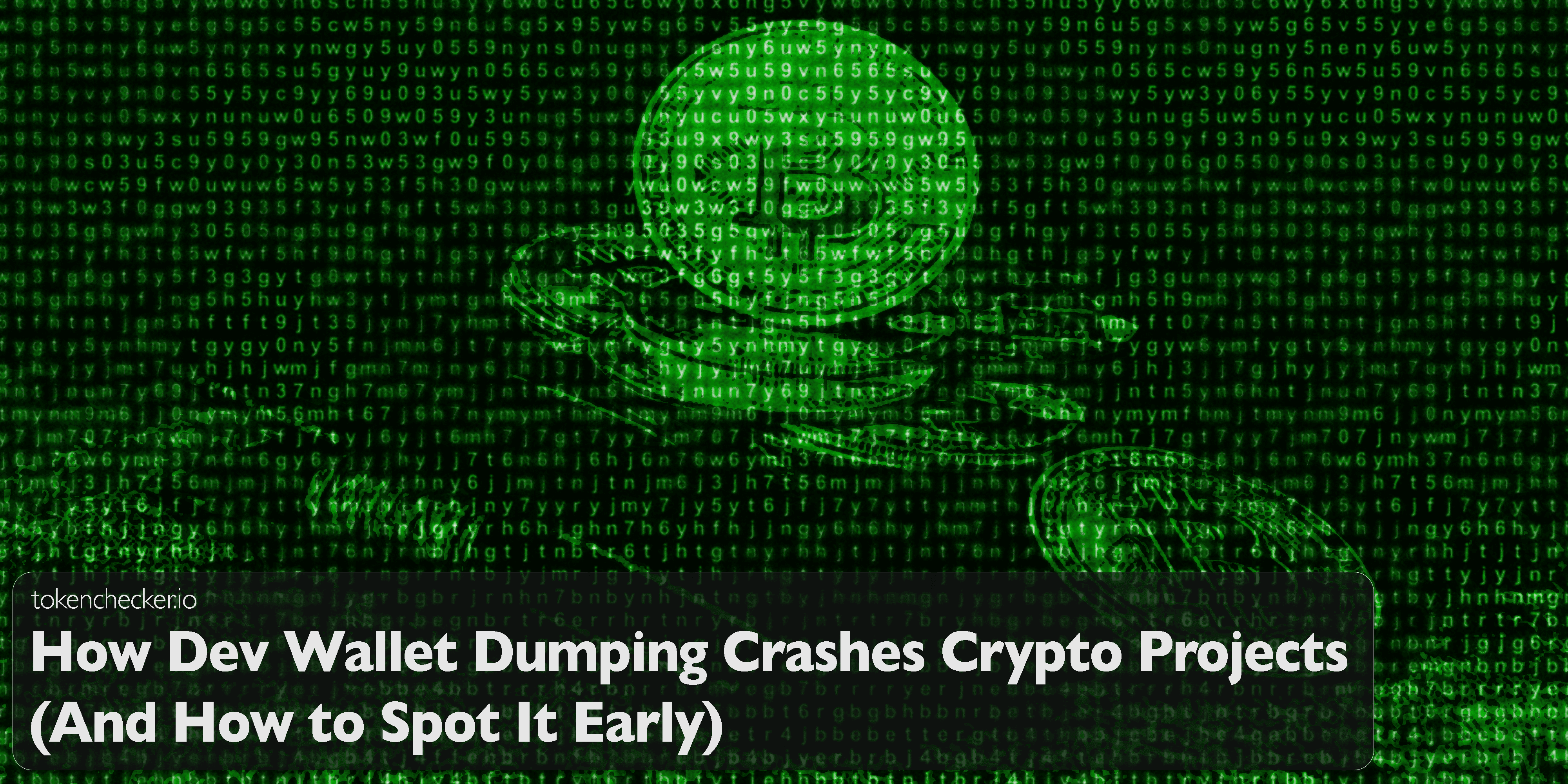
How Dev Wallet Dumping Crashes Crypto Projects (And How to Spot It Early)
Introduction
Some crypto tokens look fine on launch day. Liquidity is added, the price moves up, and people start piling in. But then, suddenly, the price collapses. Holders are left stunned. The project didn’t get hacked. It didn’t fail to launch. It just... dumped.
More often than not, that crash comes from one place: the developer’s own wallet.
In this article, we’ll break down what dev wallet dumping is, how it ruins projects, and how you can detect it before it happens. We’ll also show how tokenchecker.io gives you early warning signs most traders miss.
What Is Dev Wallet Dumping?
Dev wallet dumping is when the developer or the wallet that deployed or controls the token starts selling off their token holdings after launch. Sometimes they do it quickly, like a rugpull. Other times, they drain value slowly over days or weeks.
It’s not always illegal. But it’s always a red flag.
These wallets often hold huge amounts of supply. When they dump, the price collapses. The token might technically survive but retail investors are left holding the bags.
Why It Happens
1. No Vesting
Dev wallets often get their tokens at launch and can sell them immediately. With no vesting schedule, they’re free to exit anytime.
2. Early Access
Devs often mint or transfer large amounts of tokens to themselves before the public gets in. That means they’re always first in line to sell.
3. Price Pump Setup
They wait until the token has hype, volume, and rising price then dump into that liquidity while people are still buying.
This is how “exit liquidity” is created. You’re not buying into the project. You’re buying someone else’s profit.
Real-World Examples
SaveTheKids Token
Promoted as a charity token, it launched with major influencer backing. But the dev wallet and insiders sold early and hard. Within hours, the price crashed. What was left? Empty promises and worthless tokens.
SQUID Token
No sell function, but dev wallets still received and transferred tokens across chains. Once the hype peaked, they extracted liquidity through alternative means. Investors couldn’t sell but the devs could.
AnubisDAO
Raised over $60 million in ETH. Hours later, all the ETH was gone. The deployer wallet had full control and transferred the funds out with no warning.
How to Spot It Early
Watch the Creator Wallet
Is the wallet that deployed the token also receiving large amounts of tokens? Is it selling shortly after launch?
tokenchecker.io’s Creator Wallet Monitoring tracks activity from deployer-linked wallets and shows buy/sell behavior in real time.
Check for Large Transfers
Sometimes devs spread their holdings across multiple wallets. Look for large transfers immediately after launch, especially to wallets that later dump.
tokenchecker.io’s Transfer Tracker helps uncover these patterns.
Study the Holder Breakdown
Are a few wallets holding most of the supply? Are any of them connected to the creator?
Use tokenchecker.io’s Top Holders and Holder Distribution tools to see exactly how centralized the supply really is.
Analyze Liquidity
Is liquidity locked? Or can the dev pull it anytime?
tokenchecker.io’s Liquidity Overview shows whether LP tokens are locked, burned, or sitting in a wallet.
Why This Matters
You can’t stop someone from dumping their tokens but you can avoid buying into their exit.
If a project has:
- Centralized supply
- Unlocked liquidity
- No vesting
- Invisible minting
- A history of large transfers from dev wallets
...then it’s not a project. It’s an extraction machine.
Final Thoughts
Dev wallet dumping is one of the oldest tricks in crypto. But it still works because most people don’t look for it.
Before you buy any token, ask:
- Who controls the supply?
- Are they already selling?
- Can they mint more?
- Is the liquidity safe?
tokenchecker.io answers all of that for you in one scan. It’s not just about spotting rugs. It’s about knowing when you’re someone else’s liquidity and walking away before it’s too late.